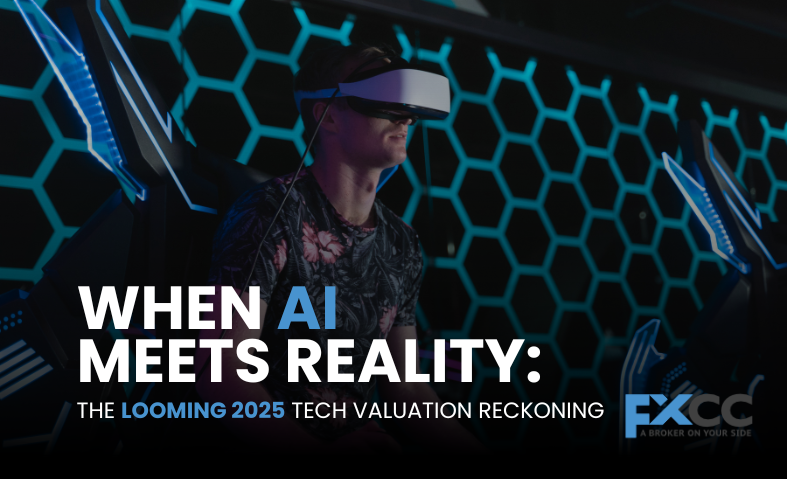The artificial intelligence revolution has captured global attention, with promises of transforming industries, boosting productivity, and reshaping economies. From self-driving cars to generative AI tools like ChatGPT, the technology has sparked a gold rush among investors, startups, and established tech giants. Billions of dollars pour into AI ventures annually, with company valuations soaring to astronomical heights. Yet beneath the glossy surface of innovation lies a growing disconnect between hype and tangible results. As we approach 2025, the AI sector faces a critical juncture—one that could force a dramatic reevaluation of its true worth.

The Hype Machine Versus Hard Realities
AI’s potential is undeniable, but its current trajectory mirrors historical patterns of technological overexuberance. Many companies branding themselves as “AI-driven” have yet to demonstrate sustainable business models or measurable impacts on profitability. Startups often prioritize user growth over revenue, banking on future applications of their technology. Meanwhile, enterprise adoption of AI tools remains fragmented, with many businesses struggling to integrate these systems into practical workflows. For instance, while generative AI can draft emails or create images, its ability to solve complex industry-specific problems—like diagnosing diseases or managing supply chains—remains unproven at scale.
This gap between promise and delivery is widening. AI systems require massive investments in data infrastructure, computing power, and skilled personnel, yet returns on these investments are often delayed or unclear. The energy demands of training advanced AI models alone pose sustainability challenges, with some data centers consuming as much electricity as small cities. As operational costs rise and competition intensifies, companies that fail to translate AI capabilities into real-world value may find themselves vulnerable.
The Economics of Overvaluation
The AI sector’s valuation surge is fueled by a mix of genuine innovation and speculative fervor. Investors, fearing they might miss the “next big thing,” pour capital into AI startups, often overlooking traditional metrics like revenue or profit margins. Private companies with experimental AI projects achieve unicorn status overnight, while public tech giants see stock prices climb on AI-related announcements—even when concrete plans are vague. This environment mirrors the dot-com bubble of the late 1990s, where companies added “.com” to their names to attract funding, regardless of their actual technology.
A key driver of this trend is the “halo effect” surrounding AI. Businesses assume that adopting AI will automatically lead to efficiency gains or market dominance, but this isn’t always the case. For example, retail companies using AI for inventory management might save costs, but others in highly regulated fields like healthcare face slower adoption due to compliance hurdles. Additionally, the democratization of AI tools has lowered entry barriers, creating market saturation. When every startup claims to have a revolutionary algorithm, distinguishing genuine breakthroughs from marketing gimmicks becomes nearly impossible.
Triggers for a 2025 Reckoning
Several factors could catalyze a market correction in 2025. First, rising interest rates and tighter monetary policies may reduce the flow of cheap capital that has buoyed tech investments. As borrowing costs increase, investors are likely to demand clearer paths to profitability, putting pressure on cash-burning AI firms. Second, regulatory scrutiny is intensifying. Governments worldwide are drafting laws to address AI’s ethical dilemmas, from job displacement to data privacy. Compliance costs and operational restrictions could slow innovation and erode profit margins.
Third, technological stagnation poses a risk. Many AI systems today rely on incremental improvements to existing models rather than groundbreaking discoveries. If progress plateuses—for instance, if generative AI fails to evolve beyond its current capabilities—public enthusiasm could wane. Finally, market sentiment is fickle. A few high-profile failures, such as an AI startup collapsing after misrepresenting its technology, might trigger broader panic, leading investors to pull back from the sector altogether.
Preparing for the Shift
Not all AI ventures will face collapse. Companies grounded in practical applications—such as those optimizing manufacturing processes or enhancing cybersecurity—are better positioned to withstand a downturn. Success will depend on demonstrating clear ROI, whether through cost savings, revenue growth, or solving niche problems. Transparency will also be critical. Firms that openly address AI’s limitations while showcasing measurable achievements are more likely to retain stakeholder trust.
For investors, diversification and due diligence are key. Rather than chasing every AI trend, focusing on sectors where the technology addresses specific pain points—like healthcare diagnostics or climate modeling—could mitigate risks. Governments, too, have a role to play. Policies that encourage responsible AI development while supporting workforce transitions could soften the blow of market adjustments.

A Necessary Reality Check
The AI revolution is real, but its trajectory will likely be bumpier than optimists predict. The 2025 reckoning won’t spell the end of artificial intelligence; instead, it may separate fleeting trends from transformative tools. Much like the dot-com crash of the early 2000s, which cleared the way for enduring tech giants like Amazon and Google, a market correction could refocus the industry on sustainable innovation.
For now, the AI sector remains a tale of two futures. One path leads to mature technologies that augment human capabilities and drive economic growth. The other descends into a cycle of disillusionment, where overpromising and under delivering erode public and investor confidence. Which future prevails depends on how quickly the industry aligns its ambitions with reality—before the clock runs out in 2025.

